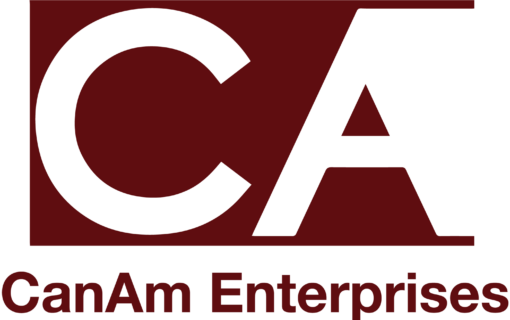Investors globally have been increasing allocations to alternative investments. In fact, the volume of global capital invested in alternatives now exceeds $10 trillion in assets under management (AUM), according to research firm Preqin. Some investment industry professionals believe that adding alternatives to portfolios could help to achieve better risk-adjusted returns in the coming decade. So, what exactly are investment alternatives, and are they the right fit for your portfolio?
There are generally three types of traditional investments: stocks, bonds and cash or cash equivalents (those assets that can be easily converted to cash, such as a money market account or bank certificate of deposit). Alternative investments cover, for the most part, everything outside of those three core types of assets, such as real estate, commodities, hedge funds and private equity investments. Alternative investments also span a variety of tangible assets ranging from precious metals and jewelry to art, wine and antiques.
One exception to note here is real estate. Real estate investment opportunities come in a variety of different structures, including publicly traded stocks – real estate investment trusts or REITs. REIT stocks are technically an investment in the operating company that owns real estate property, not the property itself. However, some investors do use REIT stocks as an option to build portfolio allocations to real estate.
The big 3 differences
The alternative investments market has been on a growth track for the past decade, and many see more growth ahead. One of the factors fueling that expansion is that alternatives that were once exclusive to large institutions and ultra-high net worth individuals are continuing to be more accessible to mainstream investors. Yet when investing in alternatives, it is important to understand three key differences – liquidity, stability and accessibility.
1. Liquidity: Typically, most traditional stocks, bonds and CDs can all be bought and sold quickly and easily. For example, investors can buy or sell a stock within minutes, whether they are do-it-yourselfers trading through an online brokerage account or putting in a call to an investment advisor. Alternative investments are less liquid and take more time to both buy and sell. In some cases, alternatives come with a specific holding period, such as 3, 5, 7 years or longer.
2. Stability: It is that difference in liquidity that tends to provide greater price stability for alternative assets. Whereas stock values are constantly moving during active trading, the value of alternatives tends to be more static. The value of real estate assets, for example, might be reassessed on an annual or quarterly basis.
3. Accessibility: It is very easy for an individual to access traditional investments. Stocks, for example, are traded in public markets, such as the Dow Jones, NASDAQ or New York Stock Exchange. Alternative investments are often sold through specific channels, such as registered investment advisors (RIAs), broker-dealers or directly between a seller and buyer. In real estate, investors can invest directly by buying a property outright, or acquire an ownership stake by investing directly with a sponsor, partnership, real estate investment trust or private equity fund.
Weigh the pros & cons of alternatives
Alternatives have different characteristics than traditional investment options. As such, it is important to weigh the pros and cons of alternatives when making investment decisions. Some of the key advantages and disadvantages to consider include:
Portfolio diversification. Alternative investment classes such as real estate often have a low correlation to traditional asset classes. Combining both traditional and alternative investments helps to create a potentially higher blended risk-adjusted return within investment portfolios.
Lack of volatility: As previously mentioned, less liquidity often means more pricing stability. This can be especially attractive during disruptive events or periods of uncertainty that can trigger extreme volatility in the stock market and a precipitous drop in stock prices.
Direct ownership: Buying alternative assets means you are a stakeholder in that entity, whether it is a piece of art, gold coins or an apartment building.
Inflation hedge: Real estate is one alternative asset that is often viewed as a hedge against inflation. In theory, property owners have the power to increase rents along with rising inflation. However, the ability to raise rents depends on a property, such as an office building or apartment, having a strong position in the market relative to its peer group.
Tax benefits: Alternative investments can provide attractive tax benefits. Two of the most important tax benefits for many real estate investors are pass-through depreciation and long-term capital gains treatment, which currently has a more favorable tax rate as compared to the ordinary income tax rate.
As with any investment, it is crucial to also consider the potential downside risks. Many alternatives require a higher minimum investment amount. For example, an individual can buy stocks or bonds for as little as a few hundred dollars. Conversely, many private equity investment funds have significantly higher minimum investment amounts that might range from $5,000 to upwards of $500,000. Moreover, that capital may need to remain invested for a specific time period, usually several years, meaning such investments are not as liquid as more traditional investments. So, it is important to be willing to have “patient capital” when investing in alternatives. In addition, because alternative investments are not traded on public markets, there is generally less transparency into the investment. That is why it is especially important to work with a trusted adviser that has experience in the alternative investing space before making an investment decision.
If you are interested in learning more about CanAm Capital Partner’s private equity offering, please contact us at info@canamcapital.com or call 212-668-0697
Featured image credit to InvestmentZen
CanAm Enterprises, with over three decades of experience promoting immigration-linked investments in the US and Canada, has a demonstrated track record of success. With over 60 financed projects and $3 billion in raised EB-5 investments, CanAm has earned a reputation for credibility and trust. To date, CanAm has repaid more than $2.26 billion in EB-5 capital from over 4,530 families. CanAm manages several USCIS-designated regional centers that stretch across multiple states. For more information, please visit www.canamenterprises.com.



